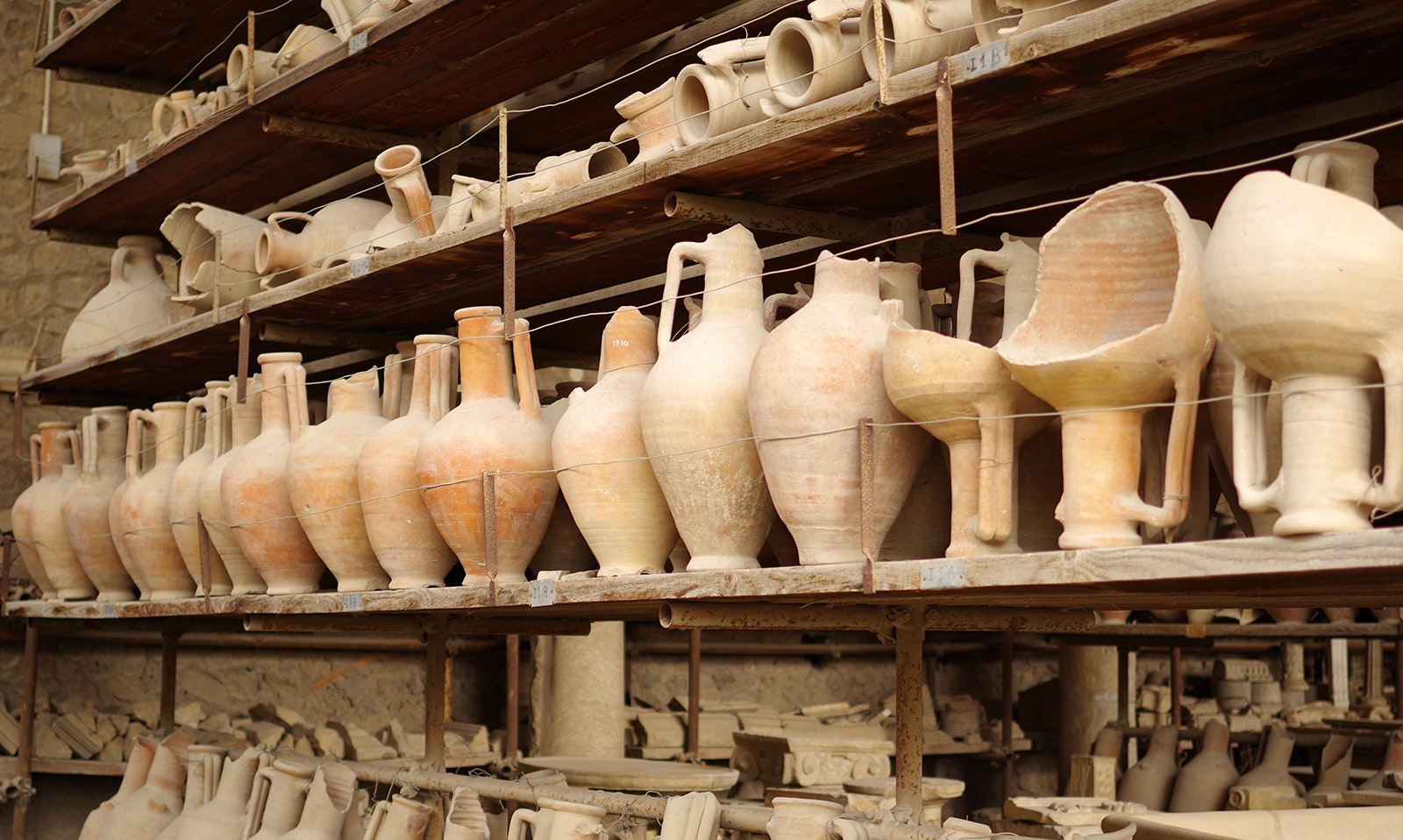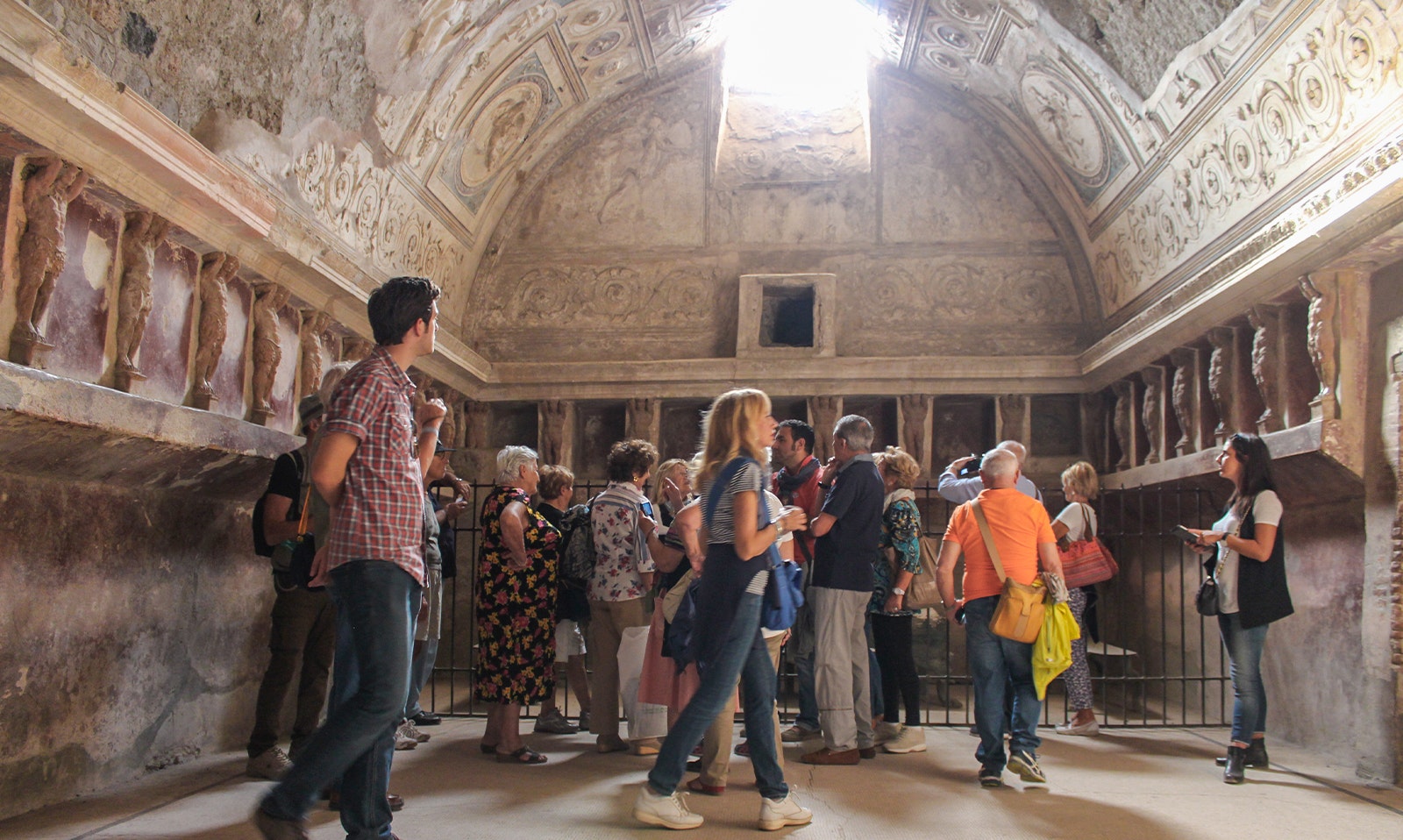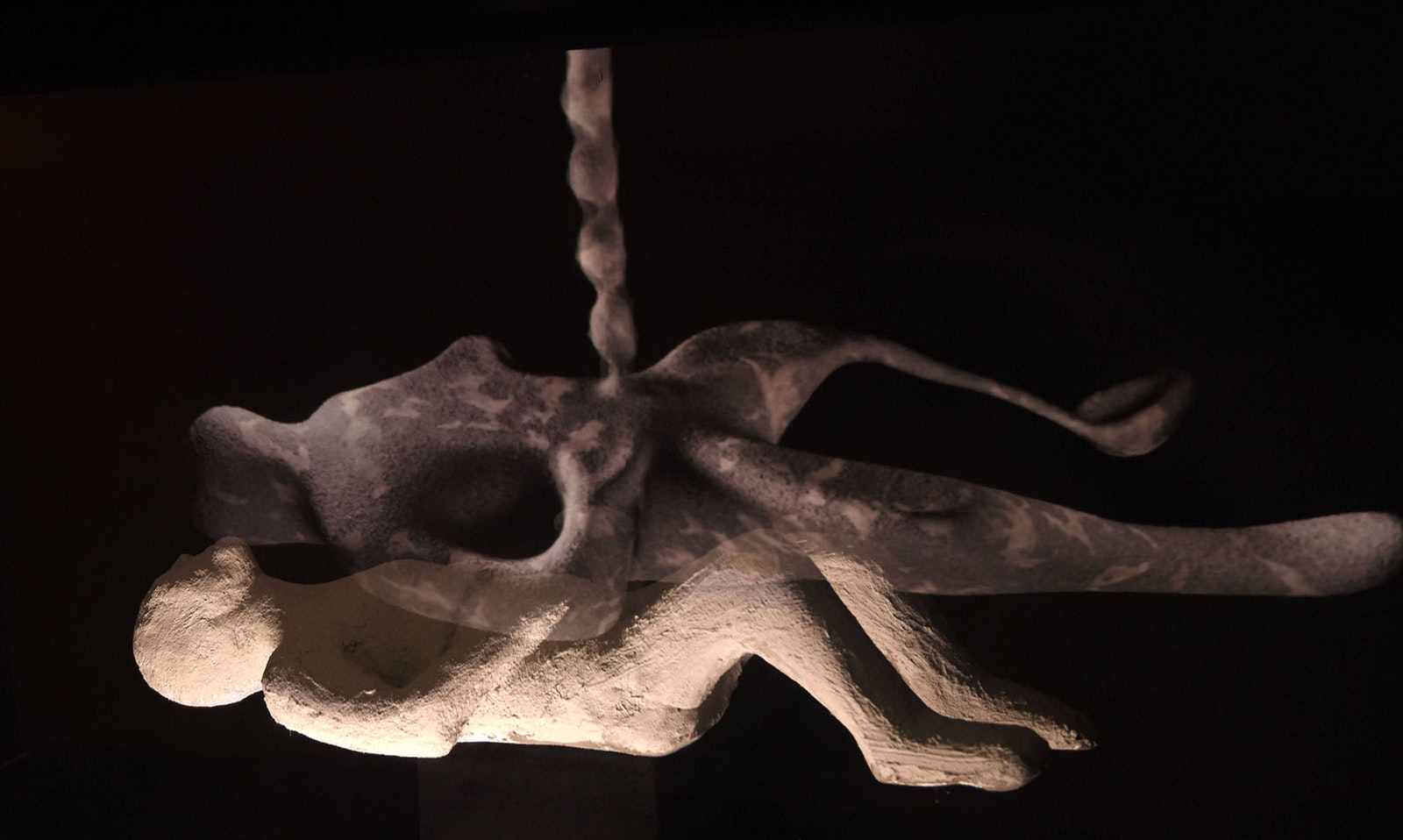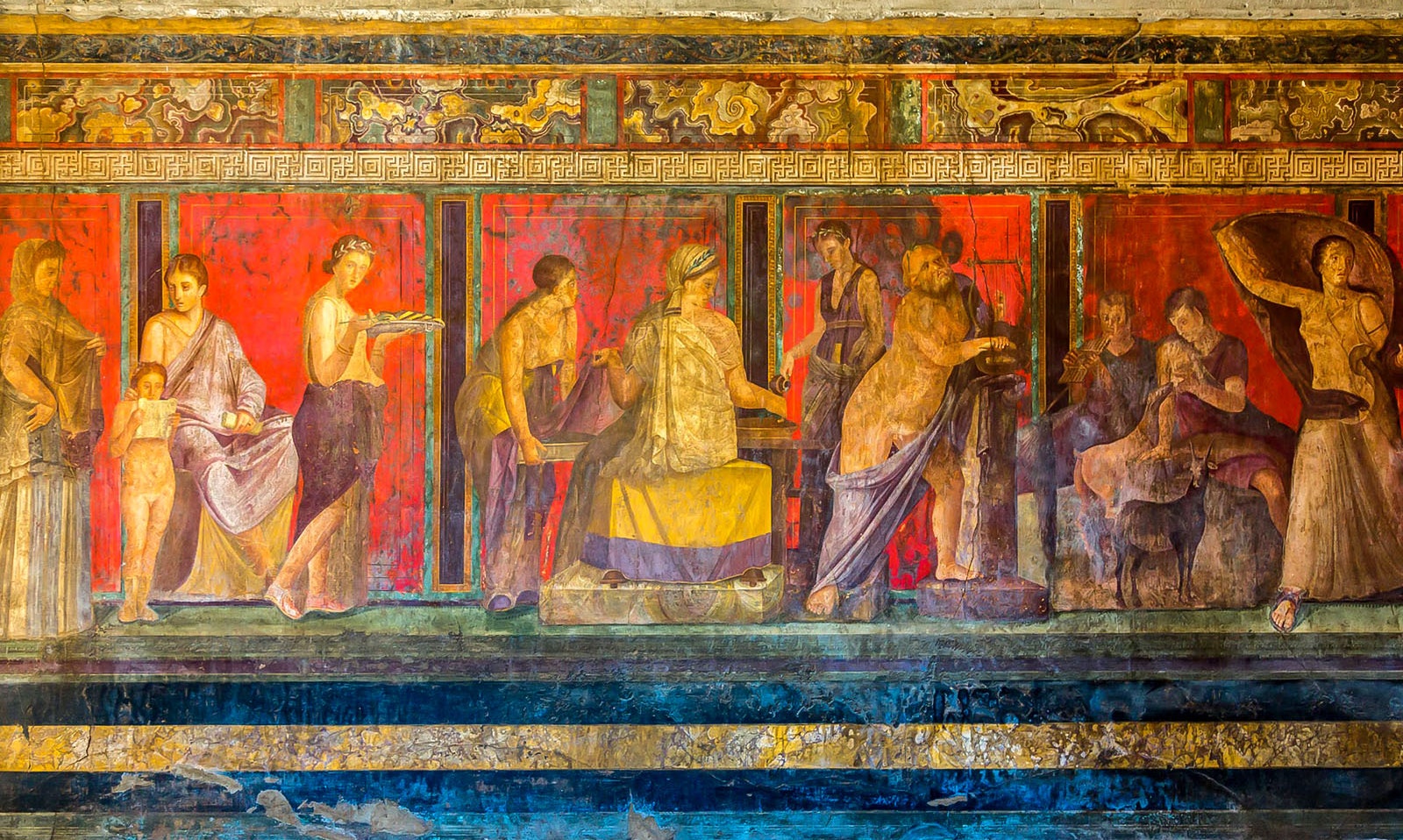The Pompeii Antiquarium is located in Region VIII, just near the Porta Marina entrance. It features rotating exhibitions that showcase various aspects of ancient Pompeian life. One of the highlights of the Antiquarium is its impressive multimedia presentation, which digitally reconstructs several of Pompeii's ancient buildings. This virtual tour provides a fascinating glimpse into the city's past, making it an ideal starting point before exploring the ruins themselves.
Pompeii Antiquarium in a nutshell
Opened in: 2021
Built by: Giuseppe Fiorelli
Timings: Daily, 9am to 3pm
Location: 80045 Pompei, Metropolitan City of Naples, Italy
Recommended tickets to Pompeii
An entry ticket to Pompeii includes access to the Antiquarium at no additional cost. It's recommended to allocate at least 2 hours to fully explore the Antiquarium and appreciate its exhibits.
History of Pompeii Antiquarium
The Pompeii Antiquarium, constructed by Giuseppe Fiorelli from 1873-1874, originally showcased artifacts and casts of eruption victims. Amedeo Maiuri expanded it in 1926, adding excavation maps and finds from Boscoreale and Via dell'Abbondanza. Damaged by WWII bombing in 1943, Maiuri restored and reopened it in 1948.
The 1980 earthquake forced its closure until 2016 when it became a visitor center. Renovated and reopened in 2021, the Antiquarium now traces Pompeii's history from the 4th century BC to the fateful 79 AD eruption through its most significant artifacts, inspired by Maiuri's original vision.
What to see at the Pompeii Antiquarium
Room 1

Room 1 offers insights into Roman life and the Vesuvian area's conditions. Artifacts like a fishbone helmet and botanical samples reveal fishing practices and flora along the Sarno River. The exhibits reconstruct the region's characteristics, showcasing how inhabitants utilized natural resources. Finds also document the area's state, partially extinct flora and fauna, agricultural and pastoral activities, and the ancient Vesuvians' lifestyle and relationship with their environment.
Room 2

In Room 2 of the Antiquarium, you can explore artifacts from nearby villas, including the Villa Regina and Villa of Publius Fannius Synistor. Highlights include a small marble herm depicting a bearded Bacchus, found in the villa's lararium, and a clay oil lamp with intricate decorations, discovered in a cubiculum. The room is also home to renowned Second Style wall paintings from the Villa of Publius Fannius Synistor, now preserved in museums worldwide. This distinctive style, first seen in Pompeii, is characterized by its aim to cover entire walls with elaborate paintings, transforming them from solid surfaces into works of art.
Casts and artifacts of Pompeian life

The Antiquarium houses poignant reminders of Vesuvius' victims - casts preserving their final moments. World War II bombings in 1943 damaged many, but Maiuri's restoration efforts and the Great Pompeii Project have ensured their survival. Alongside these haunting figures, everyday objects like comb, jug, oil lamps and more that offer glimpses into ancient Roman life.
Ancient paintings

The Pompeii Antiquarium showcases an impressive collection of ancient paintings from various notable houses, including the House of the Vettii, Villa of the Mysteries, and House of the Golden Bracelet. These well-preserved works offer a glimpse into the vibrant art and culture of Pompeii, featuring intricate designs and captivating scenes that have endured through the centuries.

